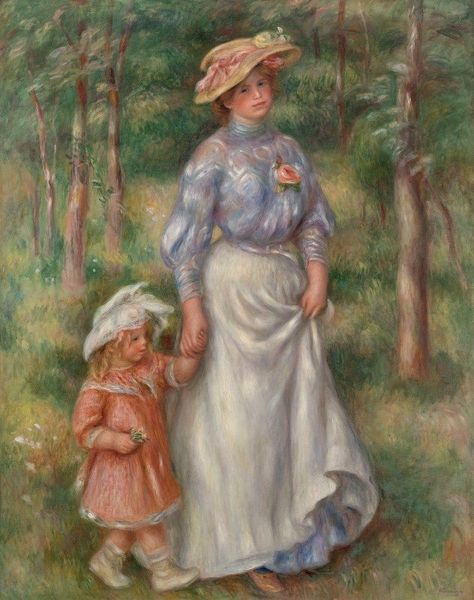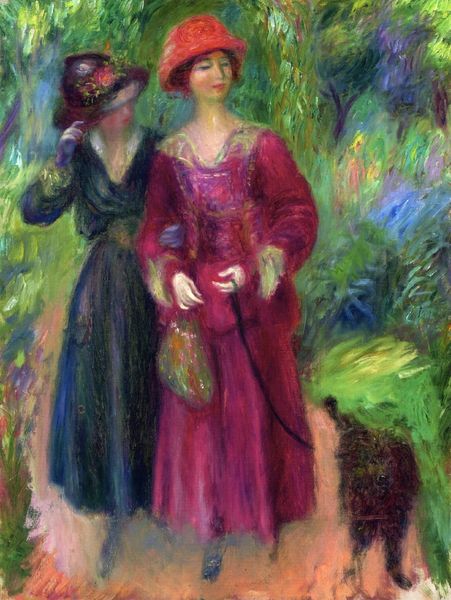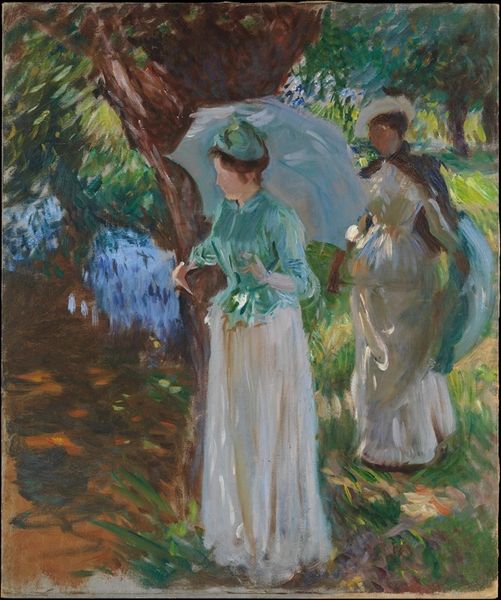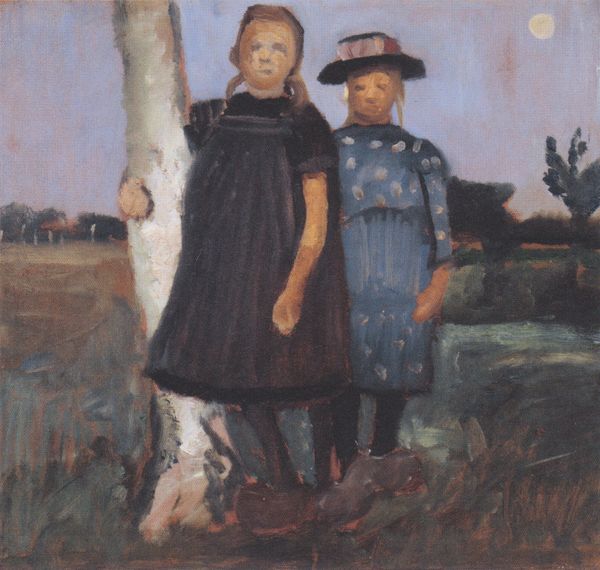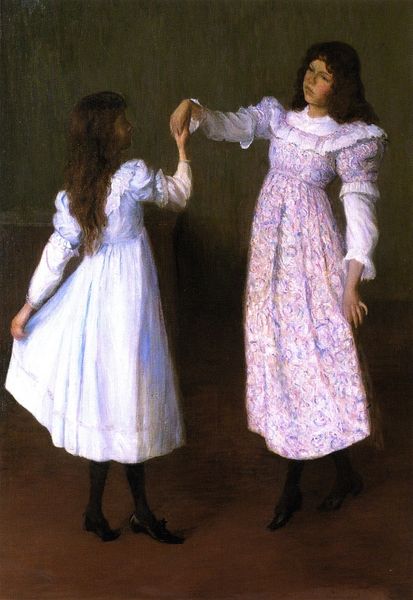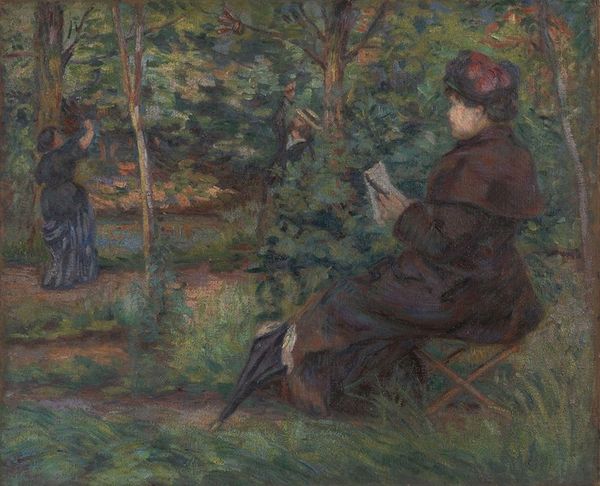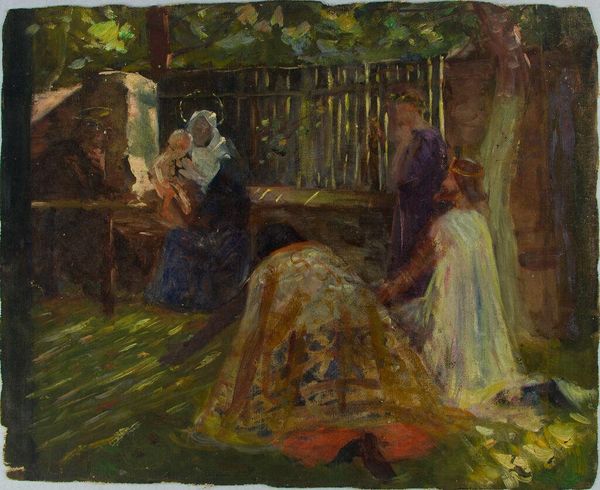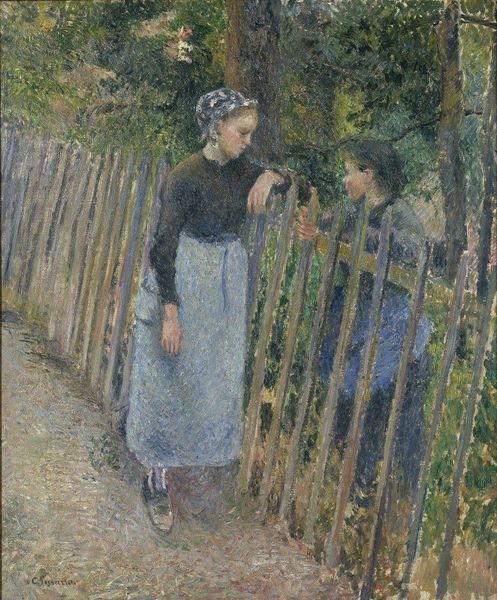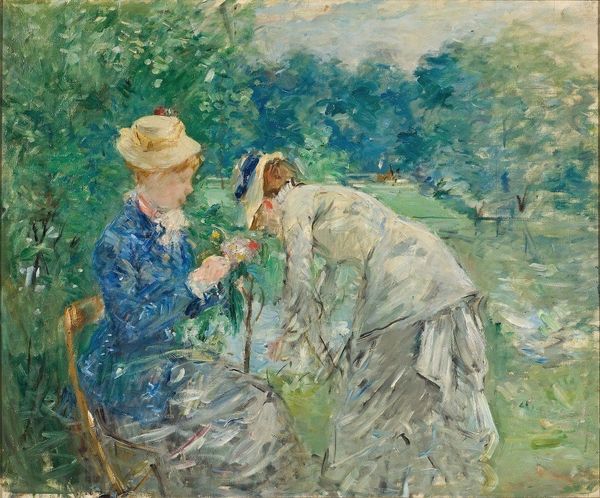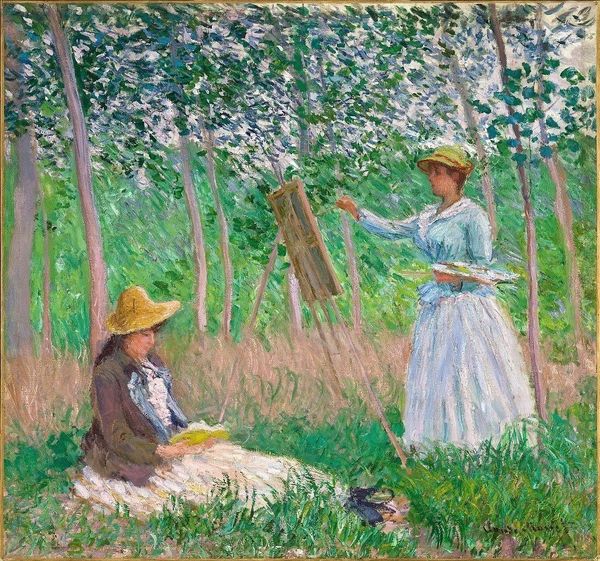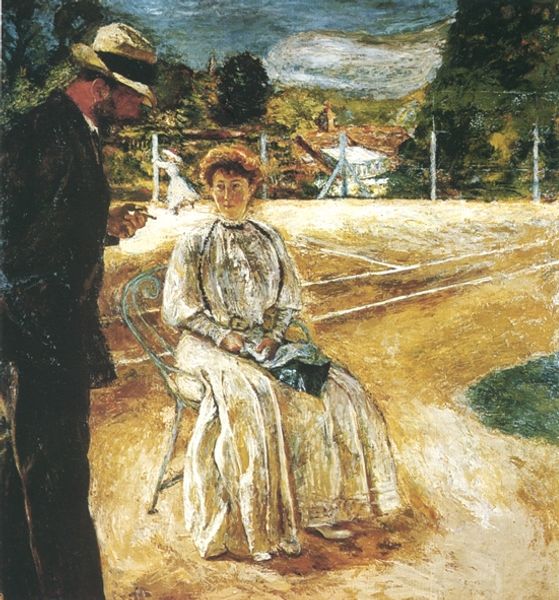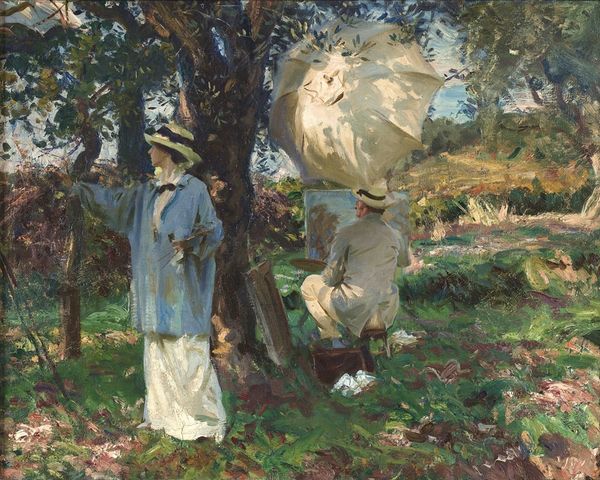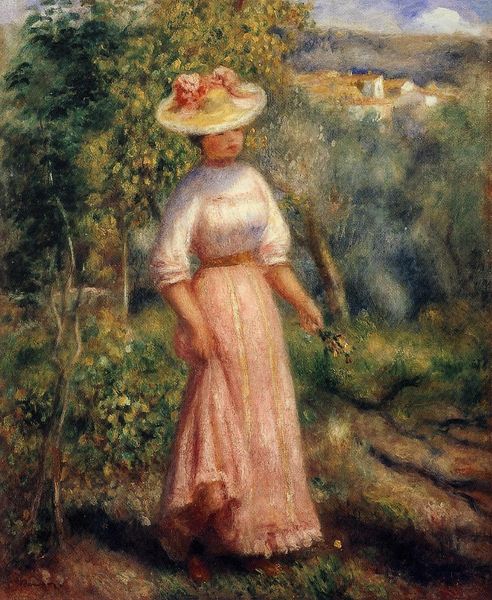
Copyright: Public domain
Curator: "The Pear Orchard," an 1895 oil painting by Joseph DeCamp, captures two women amidst a hazy, sun-drenched orchard. There's a lovely, relaxed quality to the scene. Editor: My first thought is a sense of almost otherworldly calmness. The women appear to be caught in a pocket of time. And the texture of that blue dress—almost shimmering! Curator: DeCamp was known for his deft handling of paint and light, characteristics we certainly see on display here. He studied in Munich, steeped in the tradition of academic painting. His artistic path showcases a shift in focus from academic principles to plein-air and tonalist influences, capturing fleeting atmospheric conditions outdoors. Editor: Notice how the painter uses a limited palette? Predominantly earth tones, greens, blues. I'm interested in the recurring motif of circles and ovals—the pears themselves, echoed in the hats and skirts. It suggests abundance but also a contained, almost womb-like, safety. What do you make of that ladder? Curator: Well, ladders often point to the means by which work can get done: in this instance the gathering of food to eat or sell at the market. Here it seems relatively fragile and unrefined, built for purpose not aesthetic beauty, made of wood presumably sourced locally to serve an agricultural pursuit. Editor: I find the symbolism intriguing, particularly the ladder leading towards the fruit of knowledge, perhaps a nod towards traditional iconography, linking the everyday with broader cultural understandings of labor. DeCamp captures the nuances of gender through costume and comportment. Curator: Certainly. The context of women and labor at the end of the 19th century is crucial, too. This image participates in broader narratives of the genteel pastoral, where class, labor, and access to nature, as well as constructed visions of leisure, reveal interesting aspects of cultural values at that moment in time. The painter invites a consideration of the means by which paintings, pear orchards, and social conventions, like women picking fruit, reflect back contemporary ideologies. Editor: Exactly. What appeared as mere “beauty” initially is now rich with allusions and implications of a moment, made even more complex by what we see in it today. Curator: Indeed. Every material decision reflects a world beyond itself, wouldn’t you say?
Comments
No comments
Be the first to comment and join the conversation on the ultimate creative platform.
